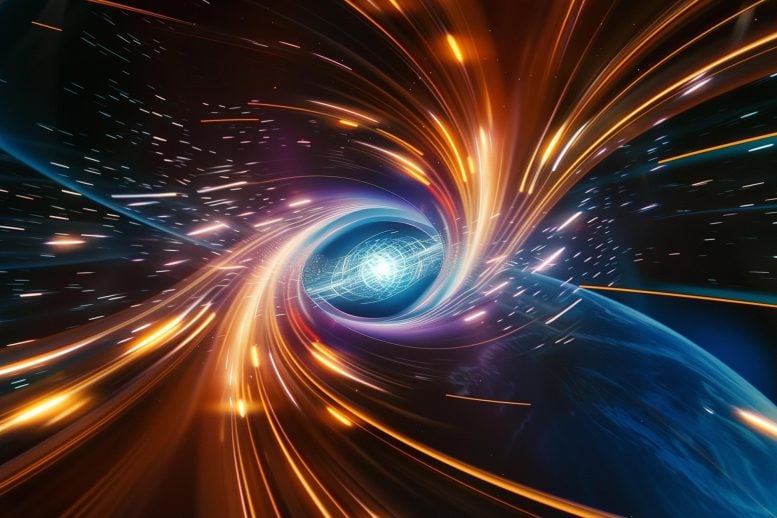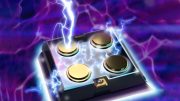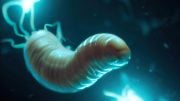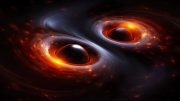
New research explored the gravitational waves emitted during a theoretical warp drive failure. The findings suggest that although current technology cannot detect such signals, future advancements may allow us to use these signals to probe deeper into the nature of spacetime and the universe. Credit: SciTechDaily.com
Researchers have been delving into the concept of warp drives, theoretically allowing spaceships to surpass the speed of light, using principles from Einstein’s General Relativity.
Physicists have been exploring the theoretical possibility of spaceships driven by compressing the four-dimensional spacetime for decades. Although this so-called “warp drive” originates from the realm of science fiction, it is based on concrete descriptions in general relativity. A new study takes things a step further – simulating the gravitational waves such a drive might emit if it broke down.
Warp Drive Research
Warp drives are staples of science fiction, and in principle could propel spaceships faster than the speed of light. Unfortunately, there are many problems with constructing them in practice, such as the requirement for an exotic type of matter with negative energy. Other issues with the warp drive metric include the difficulties for those in the ship in actually controlling and deactivating the bubble.
This new research is the result of a collaboration between specialists in gravitational physics at Queen Mary University of London, the University of Potsdam, the Max Planck Institute (MPI) for Gravitational Physics in Potsdam, and Cardiff University. While it doesn’t claim to have cracked the warp drive code, it explores the theoretical consequences of a warp drive “containment failure” using numerical simulations. Dr. Katy Clough of Queen Mary University of London, the first author of the study explains: “Even though warp drives are purely theoretical, they have a well-defined description in Einstein’s theory of General Relativity, and so numerical simulations allow us to explore the impact they might have on spacetime in the form of gravitational waves.”
Collaboration and Simulation Studies
The results are fascinating. The collapsing warp drive generates a distinct burst of gravitational waves, a ripple in spacetime that could be detectable by gravitational wave detectors that normally target black hole and neutron star mergers. Unlike the chirps from merging astrophysical objects, this signal would be a short, high-frequency burst, and so current detectors wouldn’t pick it up. However, future higher-frequency instruments might, and although no such instruments have yet been funded, the technology to build them exists. This raises the possibility of using these signals to search for evidence of warp drive technology, even if we can’t build one ourselves.
Future Research Directions
Prof Tim Dietrich from the University of Potsdam comments: “For me, the most important aspect of the study is the novelty of accurately modeling the dynamics of negative energy spacetimes, and the possibility of extending the techniques to physical situations that can help us better understand the evolution and origin of our universe, or the processes at the center of black holes.”
Warp speed may be a long way off, but this research already pushes the boundaries of our understanding of exotic spacetimes and gravitational waves. The researchers plan to investigate how the signal changes with different warp drive models.
Reference: “What no one has seen before: gravitational waveforms from warp drive collapse” by Katy Clough, Tim Dietrich and Sebastian Khan, 25 July 2024, The Open Journal of Astrophysics.
DOI: 10.33232/001c.121868









Be the first to comment on "Faster Than Light Travel: New Simulations Explore Warp Drive Gravitational Effects"